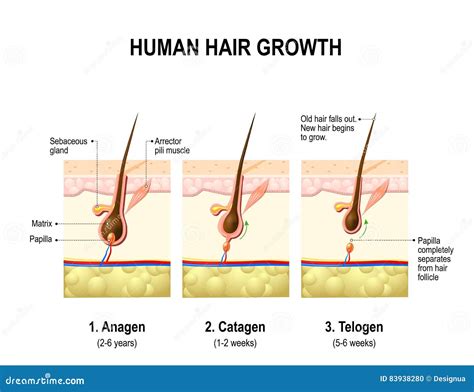Understanding the Pace of Facial Hair Growth
For many men, growing a beard is a journey of patience and curiosity. One of the most common questions revolves around how quickly that facial masterpiece actually takes shape. While individual rates can vary significantly, there’s a general average that provides a good benchmark for expectations.

The Average Daily Growth Rate
On average, human hair, including facial hair, grows approximately 0.3 to 0.5 millimeters (mm) per day. This might seem like a tiny increment, but it adds up! Over the course of a month, this translates to about half an inch (around 1.25 cm), and over a year, a beard could theoretically grow about 6 inches (15 cm) long, assuming it’s not trimmed and individual factors are optimal.
It’s important to note that this is an average. Some men will experience slightly faster growth, while others might find their beards grow a bit slower. The perceived growth can also depend on the thickness and density of the beard, as a denser beard might appear to grow faster even if the length increment is the same.
Key Factors Influencing Beard Growth
Several physiological and external factors play a crucial role in determining how fast and thick a man’s beard will grow:
- Genetics: This is arguably the most dominant factor. Your genes determine your hair’s growth potential, density, texture, and even where you can grow hair. If your father or grandfathers had robust beards, chances are you’ll have similar potential.
- Age: Beard growth typically begins during puberty and can become thicker and denser into a man’s 20s and 30s. Growth may slow down or become patchier with advancing age.
- Hormones: Androgens, particularly testosterone and its derivative dihydrotestosterone (DHT), are central to male hair growth. Higher levels of testosterone often correlate with more robust beard growth, though the sensitivity of hair follicles to these hormones is also genetically determined.
- Nutrition: A balanced diet rich in vitamins (especially Biotin, Vitamin D, and E), minerals (Zinc, Iron), and protein provides the essential building blocks for healthy hair growth. Deficiencies can impede growth.
- Lifestyle: Factors like adequate sleep, stress levels, and regular exercise can indirectly impact hormone balance and overall health, thereby influencing hair growth. Chronic stress, for instance, can lead to hair shedding.
- Ethnicity: Different ethnic groups often exhibit variations in facial hair growth patterns and density, again primarily due to genetic predispositions.

The Hair Growth Cycle
Like all hair on the human body, beard hair follows a distinct growth cycle, which largely determines its potential length and growth rate:
- Anagen (Growth Phase): This is the active growth phase where hair cells divide rapidly, and the hair shaft extends. For beard hair, the anagen phase typically lasts from 2 to 6 years, but it can vary. The longer this phase, the longer your beard can grow.
- Catagen (Transition Phase): A short transitional phase lasting a few weeks, during which hair growth stops, and the follicle shrinks.
- Telogen (Resting Phase): The follicle is dormant, and the old hair prepares to shed. This phase lasts for several months.
- Exogen (Shedding Phase): The old hair sheds, making way for new hair to begin the anagen phase.
Understanding this cycle helps explain why some men can grow very long beards, while others hit a “terminal length” sooner – their anagen phase is simply shorter for facial hair.

Maximizing Your Beard Growth Potential
While you can’t change your genetics, you can optimize the environmental factors to support healthy growth:
- Maintain a Healthy Diet: Focus on whole foods, lean proteins, healthy fats, and a rainbow of fruits and vegetables. Consider supplements like biotin, zinc, and a multivitamin if your diet is lacking.
- Stay Hydrated: Water is essential for all bodily functions, including healthy hair growth.
- Get Enough Sleep: Aim for 7-9 hours of quality sleep per night to allow your body to repair and regenerate.
- Reduce Stress: Practice stress-reducing techniques like meditation, yoga, or regular exercise.
- Exercise Regularly: Physical activity can boost circulation and testosterone levels, both beneficial for hair growth.
- Practice Good Beard Care: While it won’t speed up growth, keeping your beard clean, moisturized (with beard oil or balm), and free from damage will ensure the hair you do grow stays healthy and looks its best.

Patience is Key
Growing a beard requires patience. Understanding that the average daily growth is only a fraction of a millimeter can help manage expectations. Instead of focusing on daily growth, consider weekly or monthly progress. The journey to a full, majestic beard is a marathon, not a sprint, deeply intertwined with your unique biology and the care you put into it.





